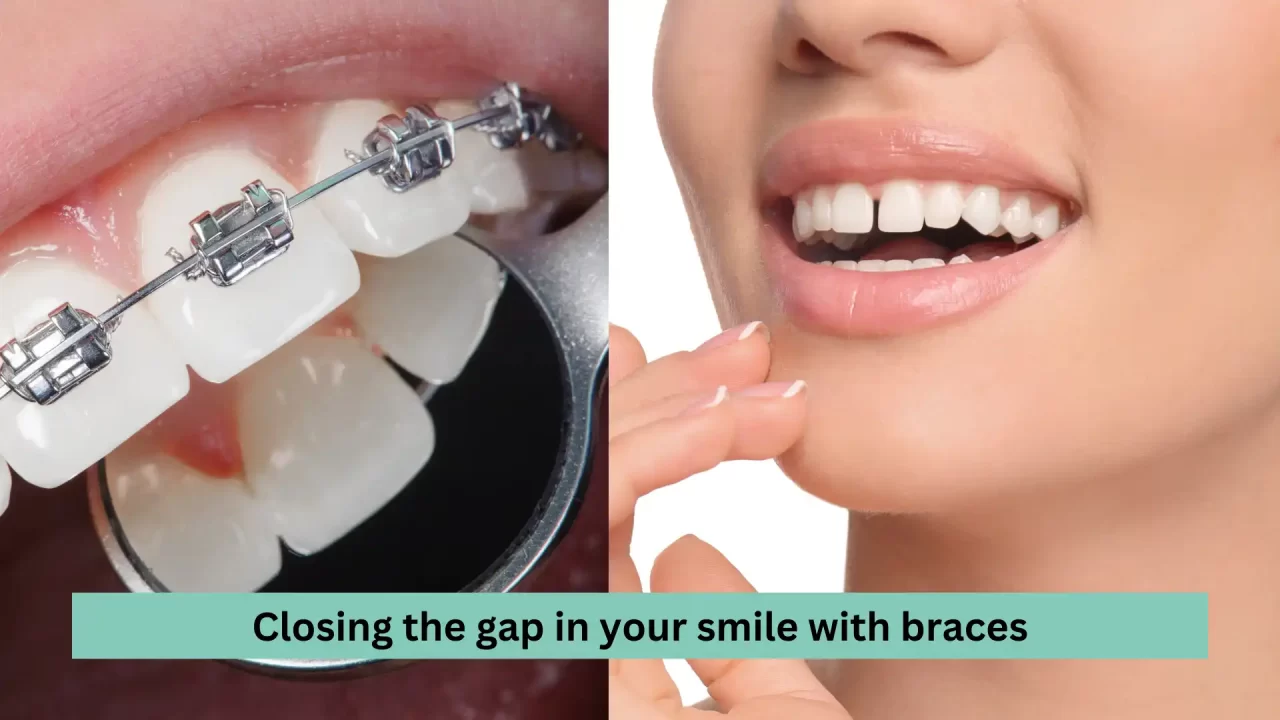
Don’t worry, we know it can be nerve-wracking visiting an orthodontist for your irregular teeth. One question we hear a lot is “how long will it take to fix my gaps with braces?” But don’t worry, we will explain why teeth gaps happen and what options we have to fix it, making the process as smooth as possible for you.
Why Do Teeth Have Gaps Between Them?
Babies typically have spaces between their teeth. But having gaps between your adult teeth might be annoying. When your jaw is larger than your teeth, gaps are frequently the result. This can happen when you get your tooth size from one parent and your jaw size from the other. But do not panic; we can assist in closing these gaps and provide you with a stunning, gap-free smile.
There can be many reasons why you have gaps in your teeth, some of them include:
- Losing a tooth because of an injury or having it removed
- Too many teeth in one area of your mouth can cause gaps in other areas
- Teeth that didn’t come in properly
- A vital piece of tissue connecting your lip to your gums that keeps your teeth from touching each other appropriately. But don’t worry, we can help you fix these gaps and give you a beautiful smile
Gaps of Different Types
There are various sorts of teeth gaps depending on the cause:
Middle diastema:
The two top front teeth are where this type of gap in the mouth most frequently appears. This gap is brought on by a strong muscle termed a (frenum), which attaches the top lip to the gums. Orthodontics, which involves straightening the thick frenum with braces or clear aligners, can help to permanently close the gap.
Extraction spaces:
Your dentist may remove one or more teeth for a number of reasons. The most frequent root causes are overcrowding, under crowding, infections, and additional teeth. The space left behind after a tooth is extracted is known as the extraction space.
Jaw and tooth size not matching:
A jaw and tooth size mismatch results in widespread tooth spacing when one inherits the jaw size from one parent and the tooth size from the other.
Irregular tooth size or shape:
One or two teeth that are irregularly formed or smaller than their adjacent teeth are present in some people. Small gaps develop between the damaged tooth and its neighbor as a result of this.
Why Should We Close Gaps?
“You might be wondering why it’s important to close gaps in your teeth. Even if the gaps are small or don’t affect your smile or bite, they can still cause problems like:
- Food getting stuck in the gaps
- Getting cavities
- Irritated gums
- Putting extra stress on the teeth next to the gap
- Having trouble speaking clearly
- Not liking the way your smile looks. So, it’s best to close those gaps to maintain a healthy and beautiful smile
You might be wondering how long it takes for braces or clear aligners to fill gaps in your teeth.
Depending on the magnitude and severity of the gap, it may take anywhere between 12 and 24 months. Other procedures, such as bridges or implants, may be required for some gaps; these procedures can take 7 to 10 days.
However, even though it could take longer, orthodontic treatment is the best and most natural technique to correct gaps. Crowns and bridges are examples of quick repairs that may cause problems and require replacement after a few years. Midline diastemas, for example, can close in three to four months.
Can Braces Be Used To Close Extraction Gaps?
What you need to know is if you think braces can be used to close every extraction gap. Braces can’t always be used to close extraction spaces. No matter how you lost your tooth, it needs to be replaced right away with a replacement tooth to prevent the adjacent teeth from shifting into this area.
The orthodontist will carefully assess your teeth and their alignment when you have an extraction space that you want to close with braces in order to decide the best course of action.
Closing Premolar Gaps
If you have crowded teeth, your orthodontist might suggest removing one or more premolars to make room for straightening your other teeth. You might be wondering how they will close the gaps left after removing these teeth. The reason for removing premolars is to make room for moving the crowded teeth into the proper position.
Removing two or four premolars won’t affect your bite, the way your face looks or your jaw alignment. This is a common technique used in orthodontic treatment.
To help close the gaps faster, your orthodontist might use something called power chains, which are tiny rubber bands that attach to your braces. These rubber bands, also known as o-rings, can quickly close gaps, especially when premolars have been removed as part of the treatment. Regular braces alone cannot close gaps, but the o-rings can help to do the job quickly.
Braces are the best and most natural way to close gaps in your teeth, but there are other options available like:
- Crowns
- Veneers
- Clear aligners
- Composites
The contour of your teeth may need to be altered for crowns, veneers, and composite fillings, but clear aligners are a popular alternative because they are almost undetectable. Clear aligners, which are transparent plastic trays that you wear over your teeth to move them and correct gaps, function similarly to braces.
Conclusion
Just like having too many teeth in a small space, having gaps between your teeth is also common and requires orthodontic treatment. With the latest technology, clear aligners are just as effective as braces in closing gaps. Additionally, clear aligners are very convenient and comfortable to use in India.
